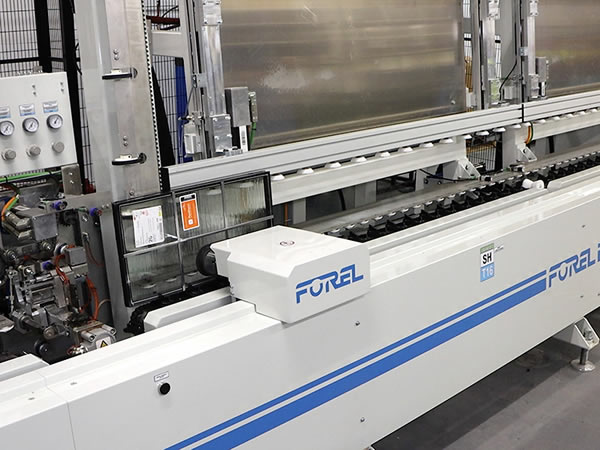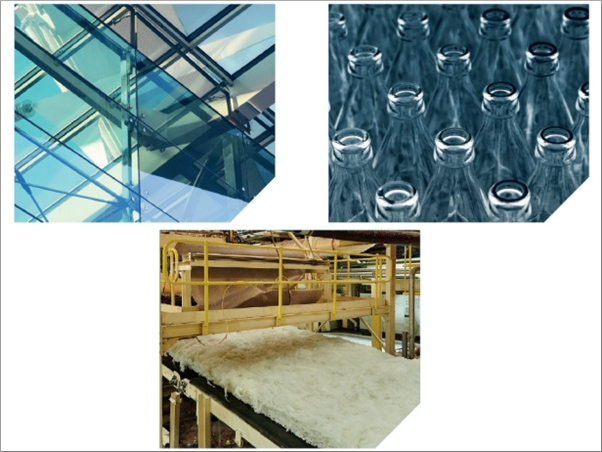Date: 30 June 2005
The machines deliver substantial productivity increases compared with traditional hand-application processes, and offer greater flexibility of patterning thanks to a novel motion control system engineered by Baldor - which includes the option of automatically accepting drawings from computer-aided design (CAD) packages.
The top-of-the-line Decorex-2 machine is designed for applying lead tape, and speeds the creation of Georgian-style doors and windows. This machine comes with an industrial PC front end running special CAD-to-motion software that converts the output of CAD packages into application programs for the real-time motion machinery. A lower-cost variant of the machine for laying Accentrim tape, Decorex-1, provides a standalone solution with its own HMI (human machine interface) panel that allows operators to create simple criss-cross or frame-patterns, or accept patterns created by industry-standard software.
The real-time control for both machines is provided by a control subsystem engineered for CADRAM and R&R by Baldor, based on the standalone NextMove(tm)-ESB controller. This compact panel-mounting box controls a precision three-axis servo-motor positioning system that drives a gantry incorporating a multi-function toolhead - providing X-Y positioning combined with a rotational facility for changing the tape laying direction.
NextMove-ESB also incorporates the I/O that controls other machine accessories required including a 'pizza knife' tool that trims the tape, some miniature pneumatic accessories that provide support functions such as pressure to bond the tape to the glass surface and a guillotine that cuts tape from the reel, and a DC motor-based tape feed mechanism. The control software is written using the Mint(tm) language, which combines a rich choice of motion control functionality with general machine control features, including a license-free multi-tasking operating system.
On the high-end Decorex-2 machine, the real-time motion subsystem's USB interface is employed to interface with a PC host that provides the operator interface. The key feature of this machine is its ability to accept drawings from conventional CAD programs, and automatically convert these to streaming real-time motion commands. This facility relies on a novel CAD-to-motion toolkit called MintNC. This PC-based environment imports information in industry-standard CAD formats - including G-code, HPGL and DXF - and generates the required real-time motion commands for the NextMove controller, automatically managing all the background processing and geometric computation functions required when changing tools and direction. The utility allowed CADRAM and R&R to add a great deal of versatility into the tape laying process without writing a lot of custom software - which could easily have added several months to project timescales.
The same basic motion and machine control subsystem is employed on the variant of the machine for applying Accentrim tape - which provides a low-cost means of implementing attractive glass effects such as beveling and V-grooves. On this machine, operator control is provided by a local HMI panel connected to the NextMove-ESB controller via the CANopen fieldbus. The real-time tape application program is generated following a simple configuration process. The operator selects either a simple frame design for applying tape to the edges of a piece of glass, or a more complex pattern with crossings and inputs the required number of rows and columns. The machine will alternatively accept industry-standard RWB format files and convert them, by connecting the machine to a PC using its USB interface. The tape layout program is then generated automatically. On this machine variant, the controller automatically makes the required angular or notch cuts where tapes join, and incorporates a further pneumatic tool that picks up trimmings and deposits them into a waste receptacle.
The machine concept started life over two years ago by the UK OEM CADRAM, following a commission from 3M to provide an automated tape laying solution for Accentrim tape. CADRAM began developing its control ideas for the project using a PLC. However, it found that the device's programming language was a little restrictive when it came to implementing some of the movements required for this motion-intensive piece of machinery, and handling the geometric calculations required when changing tools and directions. When looking around for a more flexible platform, it came across Baldor's NextMove motion controllers, which are supplied with the Mint language. Unlike PLCs, this machinery programming environment has evolved from the motion control arena and offers very rich support for any application requiring movement. This language also included a free real-time operating system which further helped to simplify software creation, allowing the large control programs required to be sub-divided into sets of simpler tasks. Another key attraction to using the NextMove controller was the availability of Baldor's MintNC utility, which provided a means of giving the glass industry a sophisticated new mechanism for generating and applying decoration patterns.
Following production of a prototype, CADRAM took the machine concept to an exhibition and made contact with the well-known glass automation supplier R&R Sondermaschinen of Germany, who agreed to manufacture and sell the machines in partnership. R&R made a number of mechanical modifications to the machines to make them simpler to manufacture, and provided many software ideas that make Decorex automation interface easily with the major software systems in use by the glass industry.
"The NextMove controller has given us an economic platform for this new kind of automation, and allowed us to introduce more features than we originally planned," says Ron Baker of CADRAM. "The engineering support provided by Baldor allowed us to focus our efforts on the higher level software required, substantially shortening time to market for a much-needed piece of automation."
Baldor's international support facilities have proved helpful to CADRAM and R&R on this project. The motion control engineering has been managed from CADRAM's Greenwich office in the UK, in close liaison with Baldor's Bristol-based application engineering centre. However, the machines are being built by R&R at its headquarters in Langenzenn. Baldor is supplying the complete kit of parts required directly from its German base, which includes the NextMove motion controller, plus FlexDrives and BSM brushless servo motors for the three precision axes, and the HMI.







Add new comment